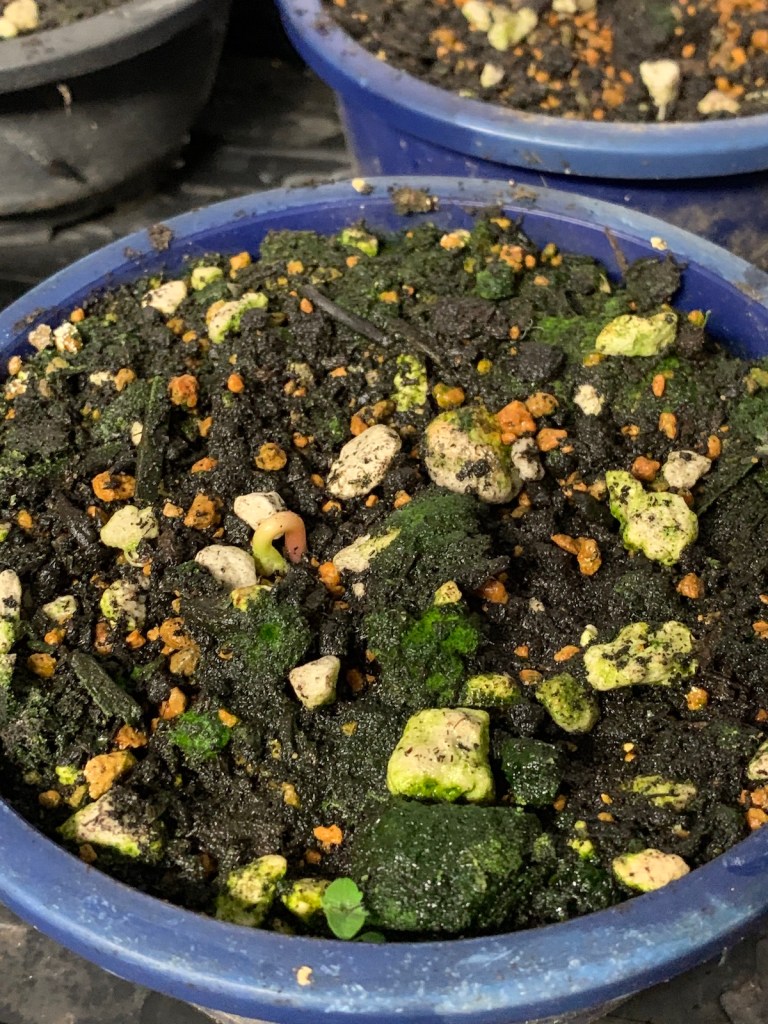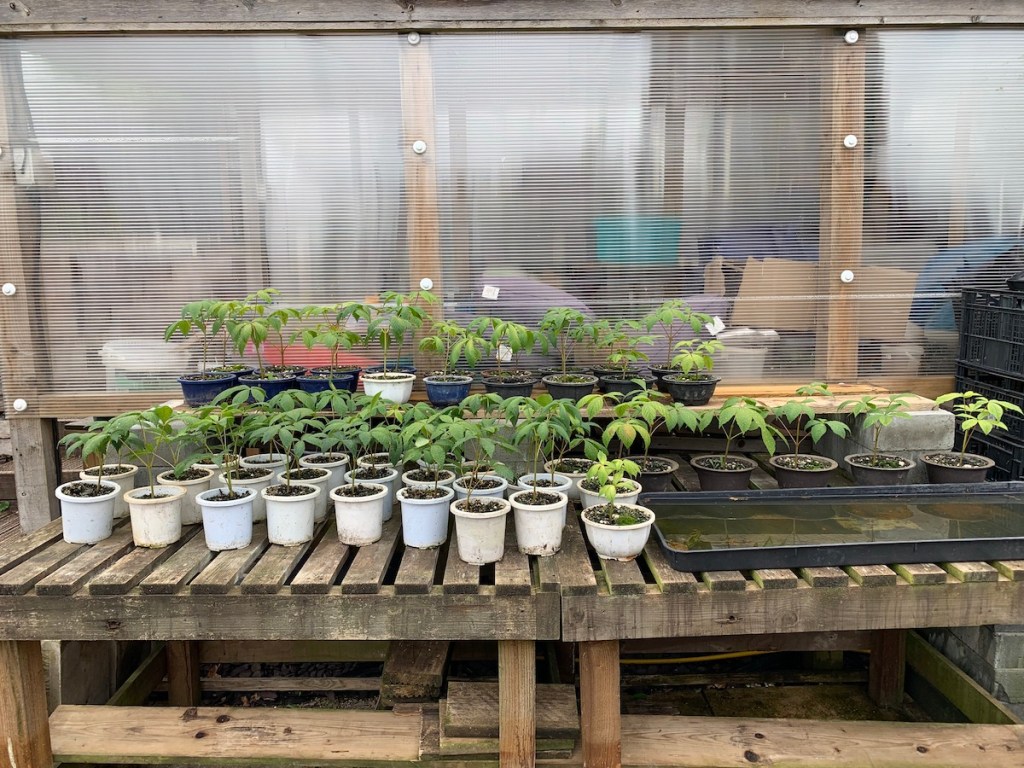
This year is a great year for tree seeds and many species have produced seeds in high volumes especially Oaks; so it is a really good source of the trees for tomorrow by collecting and planting up the seeds from today.
I went out seed gathering this season following on from last year where I collected a few conkers from a champion Indian Horse Chestnut and focused on collecting acorns this year from some fabulous oaks. Here are a few examples of my past seed collection and seed growing journeys so far.
The Indian Horse Chestnut

Having recently grown a batch of Indian Horse Chestnut trees from seed in 2019 / 2020, I thought it might be of use to share the origin of the tree and its provenance. I am not intending on using this species as bonsai because they don’t lend themselves for that purpose generally but it is the concept behind understanding where your trees originated and being able to chart the history of your trees that is the focus.
Aesculus indica is the Indian Horse Chestnut tree or Himalayan Horse Chestnut with its species origin being North West Himalaya. It was first introduced in Britain in 1851 by Colonel Henry Bunbury and is a magnificent large tree with panicles of pink-flushed flowers in June and July.
The shell or husk around the conkers is smooth and lacks the distinctive spines of the Horse Chestnut, Aesculus hippocastanum. The conkers are inedible as they contain a toxin called aesculin. The tree is deciduous and has compound, palmate leaves and thrives in most soils and is easily cultivated from seed. It also seems to be more resistant to Horse chestnut leaf miner (Cameraria ohridella) and Bleeding canker of Horse Chestnut (Pseudomonas syringa pv aesculi).

This was proven when I collected around 50 conkers in autumn last year and planted these up in pots and 49 out of the 50 germinated this spring. This is one great way to produce your own trees sustainably from UK sourced seed as well as it helps to propagate important tree species allowing their genetics to continue for future generations. However, please ensure that you have the correct permissions and collect seeds responsibly and further advice can be found on the tree council website.
Parent Indian Horse Chestnut tree
I collected the seed from a particular mature specimen of Indian Horse Chestnut, one which I considered to be a champion and one of the early introductions from around the time of 1850’s and being of around 160 years of age given its circumference of around 330cm.
Off spring of the Indian Horse Chestnut tree
They have continued to develop well and it was interesting to see the genetic diversity / variability of the different forms when the conkers all came from the same parent tree. Some remained quite short and stocky seedlings while others were much more vigorous and had more leggy growth forms.
Japanese Black Pine seedlings
Here are a few images of some of the Japanese Black Pine seeds (Pinus thunbergii) that we germinated and nearly 100% success rate which was amazing. The seeds were sourced from Nicky’s Nursery which is a small family run nursery in Kent.
Baobabs 2020
This year I wanted to have a go at growing baobabs again and during lockdown planted 4 seeds and 3 out of 4 germinated. It is so funny though how the three that have popped up are all so different in size yet all were planted at the same time but popped up weeks apart and the later ones were much slower to develop. I hope to have more success keeping these ones going through the winter than previous times I have grown them where they suffered from root rot.
From Acorns to mighty Oaks

Pot of collected acorns 
Already starting to germinate
I collected a few acorns this year and have potted them up and already they have started to germinate so really excited to see what they do over the next few months. There is so much joy and fun to be had growing trees from seeds, with the anticipation of waiting to see what grows after planting that everyone should have a go.
Growing your own bonsai tree
Growing trees from seed is a great way to also start your bonsai hobby journey and it is a very cost effective way to grow the trees yourself. It allows you to be part of the whole development process of your bonsai tree. By growing it from seed you can develop the roots, choose a style you like and develop the branches and crown and it is a great way to learn all the various techniques and processes over time.

This way may be slower than buying a tree already but it is fun to grow trees. Also bonsai as a hobby is about the journey as much as the finished article. A bonsai tree is never finished ultimately, it will need continued maintenance and refinement. So why not start from the beginning and learn with your tree along the way.
Get involved
There are many ways for you to get involved with trees and one way is to join in with National Tree Week taking place from the 28th November until the 6th December 2020 which is the UK’s largest annual tree celebration and more details can be found on the tree council website. Also check out the Woodland Trust website for more details of their tree planting and free tree planting packs for schools and communities.



























You must be logged in to post a comment.